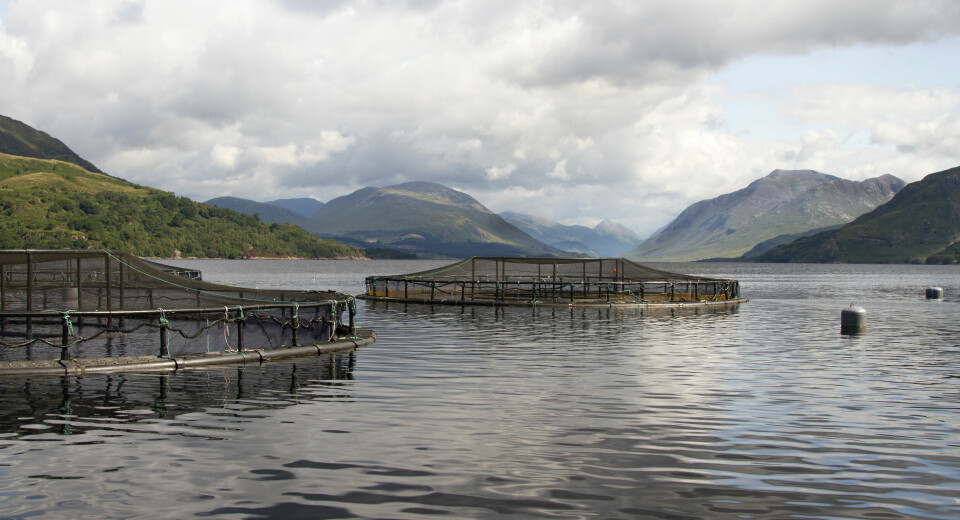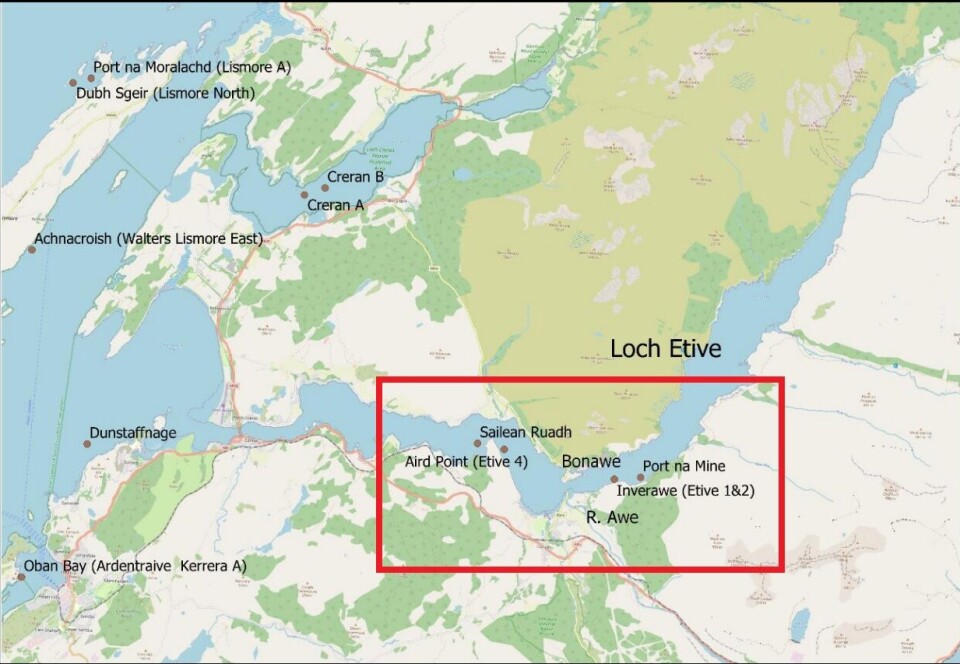
Mathematical model shows Loch Etive post-smolt plan all adds up, says Mowi
More frequent fallowing will reduce lice and may ‘obviate need’ for treatments
A switch to raising Atlantic salmon post-smolts instead of harvest-size rainbow trout on four fish farms in a Scottish sea loch will substantially lower lice numbers on the farms and reduce risk to local wild salmon populations, a mathematical model produced by salmon farmer Mowi shows.
The changeover to post-smolts entails fallowing the sites for three weeks every six months instead of every two years and will reduce or obviate the need for medicinal lice treatments, according to a 31-page report about the modelling and sea lice risk.
All four sites will be fallowed at the same time, instead of separately as in the past. This will increase the effectiveness of the fallow period in reducing lice numbers.
Less time at sea
The report has been submitted to Argyll and Bute planners as part of a change-of-use application for the farms, which Mowi Scotland acquired when it bought rainbow trout producer Dawnfresh Farming in February.
The rationale for the purchase by Mowi, which is a pure play Atlantic salmon producer, became clear in June when the company announced in its monthly newsletter, The Scoop, that it had launched a community engagement process to explore the potential to grow post-smolt salmon at Loch Etive.
Mowi wants to increase the size of smolts it stocks in marine pens from around 130 grams up to as much as a kilo to reduce the time its fish spend in marine sites from around 22 months to just 12 months. This means the fish avoid a second summer of warm temperatures and resulting algal blooms that can create significant health challenges for large salmon.
The Norwegian-owned company has previously considered
raising post-smolts in floating closed containment enclosures, or using a
land-based recirculation unit, but has found Loch Etive to be the most suitable
considering cost and carbon footprint.

Sea lice thrive in salt water, and the 18-mile-long Loch Etive has lower salinity than other sea lochs because of a high sill at the entrance that reduces depth to just seven metres and has a strong choking effect on the tide, reducing the external spring tidal range from 3.6 m to 1.8 m inside the loch, according to Mowi’s report.
Loch Etive also has a large watershed of 1,350 km², compared to its surface area of 29 km², helping to keep the water brackish. Much of the freshwater discharges into the loch via the River Awe.
“Sea lice do not favour brackish water, which reduces their reproductive success and increases mortality,” explains Mowi, which will continue to use net pens in Loch Etive.
Higher-salinity summers
Salinity was thought to be higher than normal in the past two summers, when lice levels on Dawnfresh farms were high.
“During the summers of 2021 and 2022, weather conditions were relatively dry. Unfortunately, flows in the River Awe, or in any other rivulet flowing into Loch Etive, are not gauged, so the extent of the dry conditions cannot be easily quantified,” Mowi says in its report.
“However, predictions of surface layer salinity in Loch Etive, taken from an operation hydrodynamic model WestCOMS (Aleynik et al., 2016), suggest that surface layer salinity in the loch was relatively high during the summers of 2021 and 2022, with values generally above 15 – 20 psu (practical salinity unit). During these summers then, sea lice in Loch Etive were less likely to be affected by low salinity conditions.”
Mowi is therefore not relying on salinity levels alone to keep lice levels low, but on frequent fallowing.
Fallowing twice a year
Its stocking plan, which was input into its mathematical model, involves two production periods per year, lasting 24 and 22 weeks respectively to raise fish to around 750 grams. Production periods will be separated by a three-week fallow period.
“Comparison with the on-growing simulation demonstrates the benefit of post-smolt production compared to traditional on-growing for controlling lice numbers. While the second year of production leads to high lice numbers (or high levels of treatment) for traditional farming, the repeated fallowing of the loch system for post-smolt production keeps lice numbers low all year round,” says Mowi in its report.
The report adds that modelling results “seem to confirm that post-smolt production with six-monthly fallowing should keep lice numbers well within the industry code of good practice level (0.5 adult females per fish) at all times and obviate the need for medicinal lice treatments”.
Harmonised production
The report’s authors also explored the importance of complete fallowing during post-smolt production by running simulations in which each site in turn was fully stocked with fish throughout the year, with the other three sites fallowed every six months.
The modelling was performed both with and without the predicted effects of medicinal treatments.
When medicinal treatments were included in the simulations, lice numbers were kept below 0.2 adult female lice per fish, but regular treatments were required to do so.
“The difference between these simulations and the baseline run where all sites were fallowed simultaneously is evident: simultaneous fallowing obviates the need for medicinal treatments entirely (with these model parameter values), where retaining fish on just a single site may lead to multiple treatments being necessary to keep lice numbers low,” say the authors.
Few or no treatments
They conclude that modelling suggests that switching from a traditional on-growing form of finfish farming in Loch Etive to production of post-smolts with a truncated growing cycle should significantly reduce the potential lice burden on the farmed fish and consequently significantly reduce the potential lice infection risk to wild salmonids.
“Further, with simultaneous fallowing across all sites, the need for medicinal treatments may also be obviated, or at least substantially reduced,” the authors add.
Mowi told Fish Farming Expert that the sites it plans to use, which have a combined maximum allowed biomass of 3,753 tonnes, will be used to grow post-smolts for some of the company’s high-energy sites, where stocking larger, more robust fish can provide the biggest advantage.
There isn’t enough volume in Loch Etive to produce post-smolts for all Mowi Scotland’s sites, and biomass of each post-smolt cycle will be less than the average maximum standing biomass that is currently licensed.
From 100g up to 800g
Smolts will be stocked at ~100g and size when transferred to on-growing sites will be ~400-800g. The broad spread in size is due to timings for marine pens to ensure final harvests are spread evenly over the year.
With regard to how the switch to post-smolts will affect the local community, Mowi says harvesting operations will be eliminated which will lessen overall vessel activity on the loch.
Asked about the progress of its community engagement process, a Mowi spokesperson said: “We are currently organising community consultation events in and around Loch Etive – one at Taynuilt and one at Ardchatten. These will be completed in the next two to four weeks.”























































